It's incredibly rare to see an NFL team bring back all 22 starters from the previous season like the Tampa Bay Buccaneers are set to do in 2021. Turnover is inevitable, as teams constantly rearrange the puzzle pieces in hopes of bringing home a Lombardi Trophy. This season's turnover has been particularly begrudging due to the reduced salary cap and the difficult decisions it forced. Most changes, however, are met with optimism and a clean slate.
Subscribe to
Here is one key first-year starter for all 32 NFL teams with a look at who they’re replacing and what to expect in 2021.
JUMP TO A TEAM:
ARZ | ATL | BLT | BUF | CAR | CIN | CHI | CLE | DEN | DAL | DET | GB | HOU | IND | JAX | KC | LVR | LAC | LAR | MIA | MIN | NE | NO | NYG | NYJ | PHI | PIT | SF | SEA | TB | TEN | WFT
ARIZONA CARDINALS
C Rodney Hudson
Mason Cole and Lamont Gaillard were Arizona's starting centers last year, and the duo combined for a 47.0 pass-blocking grade (28th) and a 4.4% pressure rate allowed (26th). The Cardinals addressed that hole on the offensive line by trading for the best pass-protecting center of the past decade. During stints with the Chiefs and Raiders, Hudson allowed a pressure once every 71 snaps since 2011 — the best rate in the NFL. He brings a wealth of experience and much steadier play to the center position in an Arizona offense that faces a make-or-break 2021 campaign in many respects.
ATLANTA FALCONS
CB Fabian Moreau
Moreau saw his playing time take a dive in Washington last season after notching at least 500 snaps in 2018 and 2019 playing both inside and outside. The former third-round pick out of UCLA seems to have found new life in Atlanta, though, as Moreau has taken virtually every snap with the first-team unit opposite A.J. Terrell through training camp, per Falcons team reporter Scott Bair. The Falcons will rely on Moreau to bolster a cornerback room that allowed more receiving yards than any other in the NFL last season.
BALTIMORE RAVENS
ED Tyus Bowser
Baltimore decided to let Matthew Judon and Yannick Ngakoue walk this offseason, opening the door for an expanded role for Bowser in 2021. The Ravens clearly have confidence in Bowser's ability, as evidenced by the four-year extension signed this offseason. Bowser, like Judon, has been aided as a pass rusher by the Ravens’ scheme, but his 13.1% pressure rate was still a top-25 mark at the edge defender position in 2020. Baltimore also asked him to drop into coverage more than nearly any other edge rusher (140 snaps). He’ll be asked to take on a larger role next year alongside Pernell McPhee and newcomers Justin Houston and Odafe Oweh.
BUFFALO BILLS
WR Emmanuel Sanders
Sanders joins his fifth team in Buffalo after successful stints in Pittsburgh, Denver, San Francisco and New Orleans. The early returns from training camp are promising, as The Athletic’s Matthew Fairburn said Sanders stood out as Josh Allen’s favorite target with Stefon Diggs missing practice earlier this week. The Bills are deep at wide receiver, with Sanders, Stefon Diggs, Cole Beasley and Gabriel Davis topping the depth chart. Sanders’ role as a sure-handed veteran (4.2% drop rate since 2016) and complementary target is important to maintaining that depth.
CAROLINA PANTHERS
QB Sam Darnold
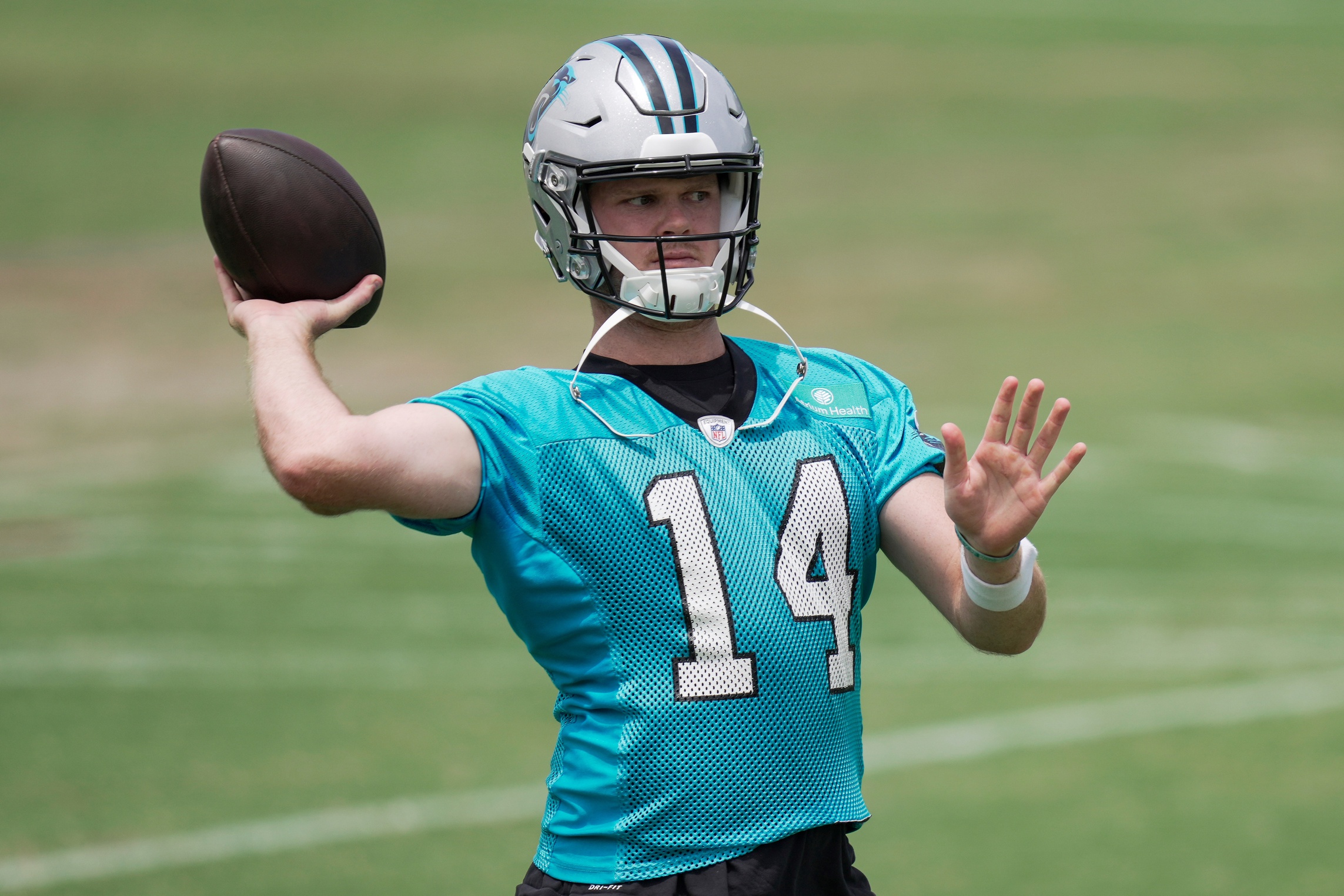
The Panthers could have decided on either Justin Fields or Mac Jones as the future face of their franchise this offseason but instead took a chance on Darnold. The former USC Trojan will need to find what made him the third-overall pick in the 2018 NFL Draft after several disastrous seasons in New York. His 63.1 PFF grade since 2018 ranks last among 32 qualifying starting quarterbacks, notably behind Case Keenum, Mitchell Trubisky and Joe Flacco.
Carolina hopes offensive coordinator Joe Brady and a talented group on offense, including D.J. Moore, Robby Anderson, Terrace Marshall Jr. and Christian McCaffrey, resurrect his career.
CHICAGO BEARS
LT Teven Jenkins
It’s an understatement to say that Jenkins missing the first two weeks of training camp is concerning, as left tackle is one of the more difficult positions for a rookie to step in and provide quality play out of the gates. It becomes harder if said rookie tackle spent the majority of his collegiate career on the right side, as Jenkins did. While he is the expected starter if healthy, Jenkins has yet to take the field due to a back injury. Jenkins’ play on the field last season at Oklahoma State (92.0 PFF grade) was worthy of a first-round selection.
CINCINNATI BENGALS
RT Riley Reiff
The Bengals don’t need Reiff to dominate this season — they simply need him to be solid. Cincinnati hasn't had consistent production from right tackle the past three years with Bobby Hart manning the position. Hart’s 7.6% pressure rate allowed since 2018 ranks last among right tackles with at least 1,000 pass-blocking snaps. Reiff will be flipping back over to right tackle for the first time since 2016, but his 4.0% pressure rate allowed in 2020 was a top-10 mark at left tackle among 37 qualifiers.
CLEVELAND BROWNS
ED Jadeveon Clowney
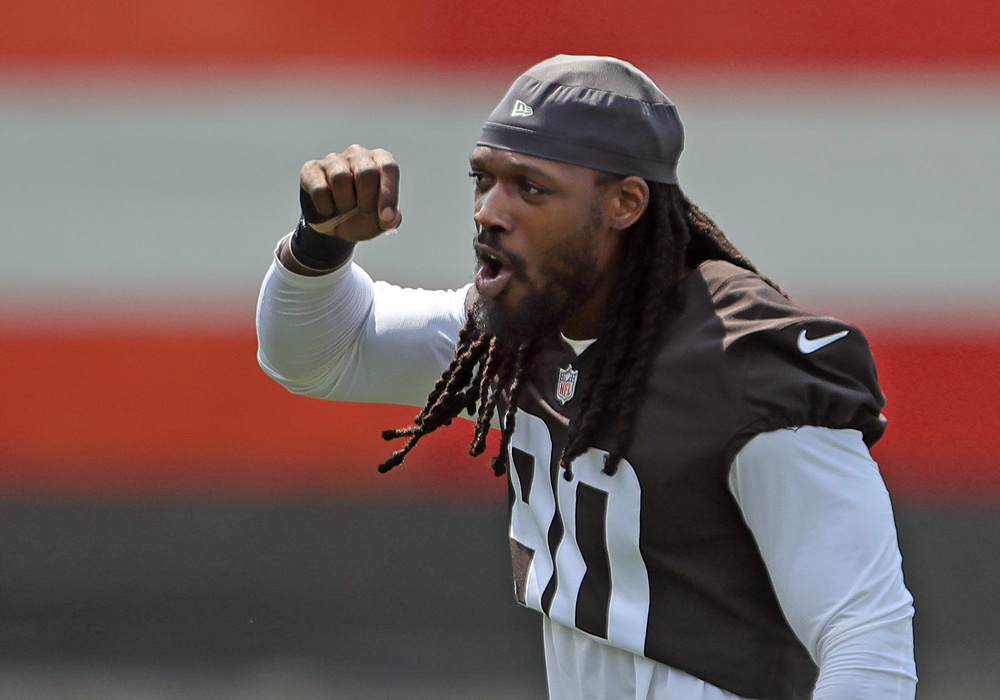
Clowney is now two years removed from a career 2018 season with Houston when he earned an 87.2 PFF grade and tallied 59 quarterback pressures. Myles Garrett is also comfortably the best defensive lineman Clowney has played next to since that season with J.J. Watt. A healthy Clowney is fully capable of elevating Cleveland’s defensive line with stellar play against the run and disruption in the passing game, even if that pressure doesn’t always result in sacks.
DALLAS COWBOYS
DI Brent Urban
Opposing offenses consistently blew Dallas’ defensive line off the ball in the run game in 2020, particularly the interior defensive line. The Cowboys were one of five teams whose interior defensive linemen collectively earned a run-defense grade below 40.0, and they allowed a league-high 2.3 rushing yards before contact per attempt. Urban will be tasked with improving the Cowboys’ run defense in 2021 as the expected starter alongside Neville Gallimore on the interior. He's coming off a career-high 85.3 run-defense grade with Chicago last season.
DENVER BRONCOS
RT Bobby Massie
The Ja’Wuan James signing clearly didn’t work out as Denver anticipated. He played 63 total snaps for the Broncos, who rank 25th in the NFL in collective right tackle grade since signing James before the 2019 season. Massie doesn’t represent a massive jump in caliber at the position, but he is likely an upgrade over Elijah Wilkinson, who saw most of the reps during that stretch.
Denver needs quality offensive line play to support whoever wins the starting quarterback job, particularly if it’s Drew Lock. Lock’s 26.5 passing grade under pressure in 2020 was nearly 10 points lower than any other quarterback.
DETROIT LIONS
WR Amon-Ra St. Brown
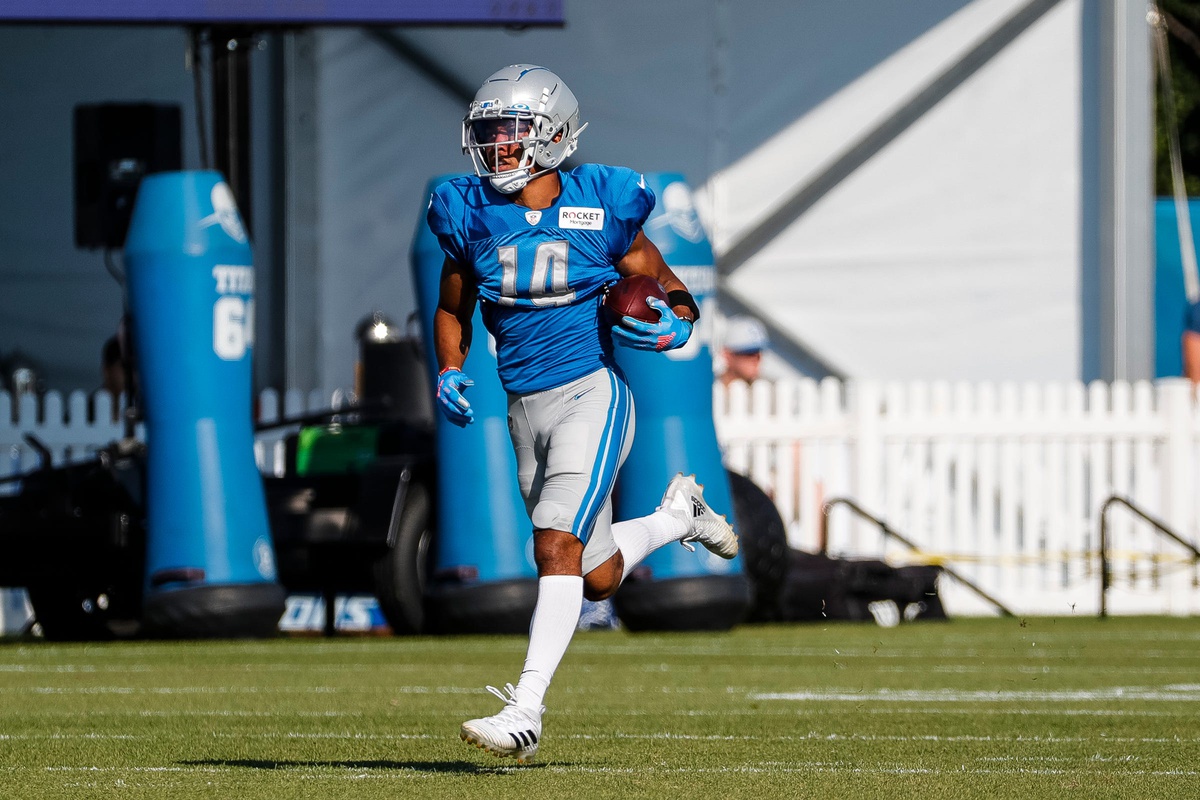
St. Brown has an immediate path to playing time in Detroit due to the limited options at the position. He and Kalif Raymond have been getting reps in the slot with the first team, per Lions’ senior writer Tim Twentyman. The former five-star recruit produced three straight seasons with at least 1.8 receiving yards per route run and 70-plus overall grades during his USC career. He boasts the route-running and after-the-catch ability to make an impact early on in the NFL, and the Lions could certainly use early production from him.
GREEN BAY PACKERS
C Josh Myers
The Packers don’t have many first-year starters, with the majority of their starting lineup, including Aaron Rodgers, returning for the 2021 season. Second-round rookie Myers does have rather large shoes to fill, as he steps in for the highest-graded center in the league last season, Corey Linsley. Myers’ lack of consistency in pass protection at Ohio State (65.9 pass-blocking grade in 2020) is a potential concern for a team that has had one of the better pass-blocking offensive lines in the league in recent years.
HOUSTON TEXANS
EDGE Shaq Lawson
Houston’s collection of interior and edge defenders earned a 47.0 PFF grade in 2020, and its highest-graded defensive lineman by far (J.J. Watt) left for greener pastures in free agency. The Texans need a big season from Lawson, whom they acquired in a trade that sent linebacker Benardrick McKinney to the Dolphins. Lawson served as a middling, rotational defensive end in his time with Buffalo and Miami, earning overall grades of at least 65.0 in each of the past four years on 400 to 600 defensive snaps. His 77 pressures since 2019 rank 42nd at the position.
INDIANAPOLIS COLTS
EDGE Kwity Paye
The Colts got younger at defensive end this offseason and replaced Justin Houston and Denico Autry with their first two draft picks in the 2021 NFL Draft (Paye and Dayo Odeyingbo). Paye needs to make an early impact with Odeyingbo working his way back from injury. The former No. 1 player on Bruce Feldman’s Freaks List is a rare athlete, and he improved his PFF grade every year he was at Michigan, ending his career with an 86.3 overall grade in four 2020 appearances.
JACKSONVILLE JAGUARS
CB Shaquill Griffin

Jacksonville attacked the cornerback position this offseason, adding Griffin and Tyson Campbell. ESPN’s Jeremy Fowler has reported Jacksonville is open to trading C.J. Henderson, so Griffin could be immediately thrown into the starring corner role. The ex-Seahawk recently turned 26 years old and has already logged four seasons with at least 800 defensive snaps in his time with Seattle. He was one of the 10 best cornerbacks in the NFL in 2019 by both PFF grade and PFF’s Wins Above Replacement (PFF WAR) metric, but he didn’t quite replicate that success in 2020 (50th in PFF WAR).
KANSAS CITY CHIEFS
LT Orlando Brown Jr.
The Chiefs took their lack of depth along the offensive line to heart after it very well may have cost them another Super Bowl title. They made many noteworthy additions to the front group this offseason, including securing Brown and Joe Thuney to lock down the left side of the offensive line.
Brown played 823 snaps at left tackle in 2020 for injured teammate Ronnie Stanley, and he ranked 13th at the position in PFF grade out of 38 qualifiers. It will be worth monitoring how he performs outside of Baltimore, where defenses had to adjust how they rushed Lamar Jackson given the ways he could hurt them as a runner.
LAS VEGAS RAIDERS
EDGE Yannick Ngakoue
The Raiders need their front four to generate pressure under new defensive coordinator Gus Bradley. The Los Angeles Chargers ranked last in the league in blitz rate during Bradley's tenure (16.4%). That’s why Las Vegas signed Ngakoue this offseason. For as little as Ngakoue provides against the run, he has shown he can get after opposing quarterbacks. He grades out in the 80th percentile of all edge rushers in pass-rush grade over the past four years.
LOS ANGELES CHARGERS
LT Rashawn Slater
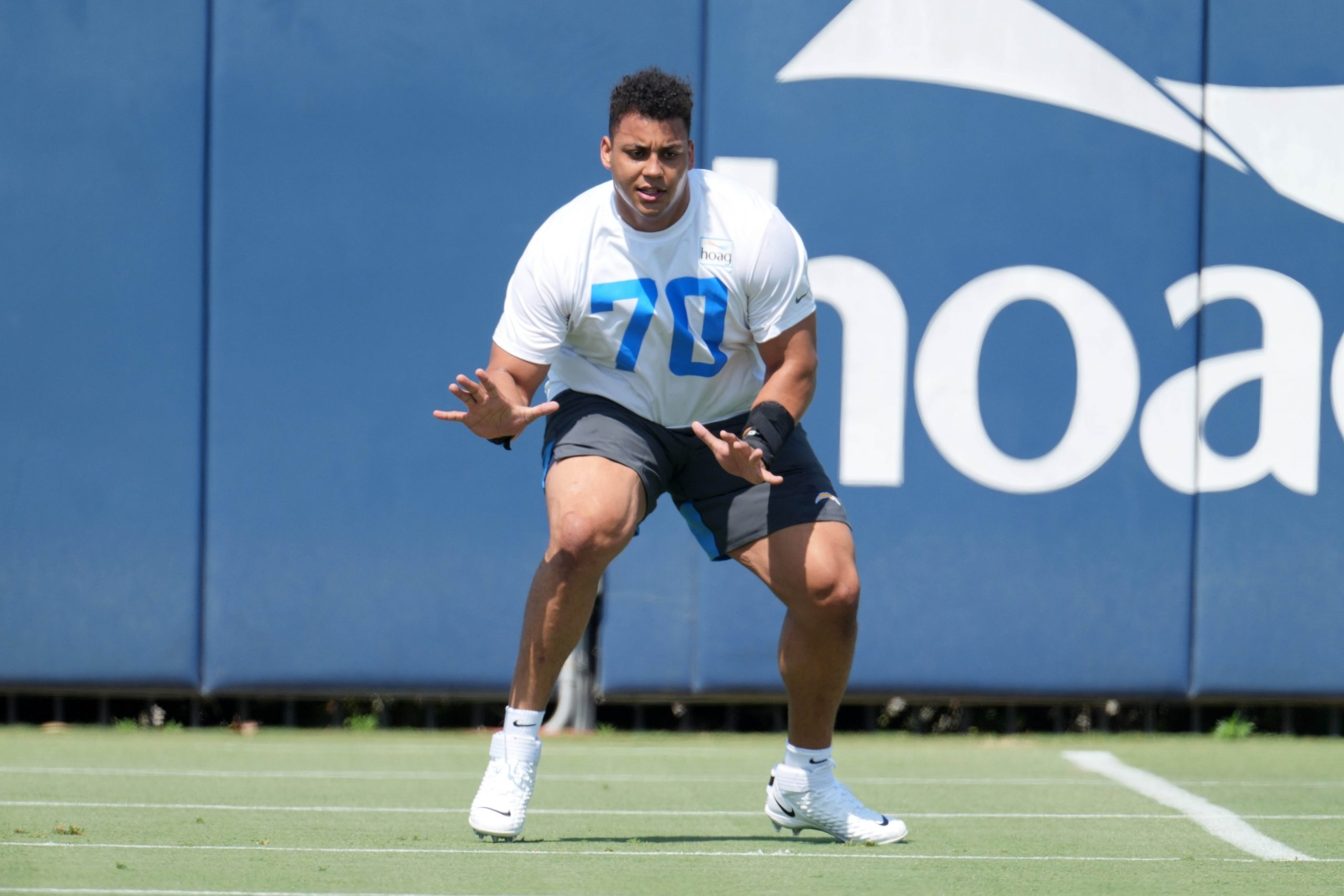
The Chargers offensive line was arguably the most improved position group in the NFL this offseason after the veteran additions of Corey Linsley, Matt Feiler and Oday Aboushi in free agency as well as first-round rookie Slater at left tackle. Slater has a low bar to clear, as Los Angeles is one of just six teams whose left tackles have allowed a pressure rate over 7.0% since 2019. Slater earned a 90.0 PFF grade and allowed just five pressures in his final season at Northwestern in 2019.
LOS ANGELES RAMS
WR DeSean Jackson
The Rams emphasized speed at the wide receiver position this offseason with the additions of Jackson and Tutu Atwell out of Louisville. Jackson has been limited to just 169 routes run over the past two seasons due to myriad injuries, but he is still one of just nine players with three or more receiving touchdowns of 50-plus yards over that stretch. A healthy Jackson adds a different element to this offense and could be in store for a nice bounceback season with Matthew Stafford at quarterback.
MIAMI DOLPHINS
WR Jaylen Waddle
Waddle’s combination of speed and quickness made him one of the most dynamic athletes in college football during his time at Alabama. He now brings that skillset to Miami, where he pairs with DeVante Parker and Will Fuller to provide his former quarterback Tua Tagovailoa with an intriguing receiving corps. Waddle can serve as a deep threat in the Dolphins’ offense, but he’s more than that. PFF’s Austin Gayle listed him as the best after-the-catch receiver in the draft class earlier this offseason, following two straight seasons averaging over 10 yards after the catch per reception.
MINNESOTA VIKINGS
CB Patrick Peterson

The Vikings represent a blank slate for Peterson to rejuvenate his impressive career. Peterson ranks in just the 37th percentile of outside cornerbacks in coverage grade over the past two seasons. However, Vance Joseph's man-heavy defense did Peterson's declining athleticism no favors. The Vikings' secondary provides an opportunity for Peterson to bounce back in a more favorable defensive scheme. Only the Chargers, Seahawks and Rams have run more zone coverage than Minnesota over the past two seasons.
NEW ENGLAND PATRIOTS
WR Nelson Agholor
Going back to what worked in the past, New England is set to orchestrate their offense around two talented tight ends. However, they also made a rather large investment in Agholor at wide receiver.
His career has been up and down, but the Patriots hope Agholor replicates his downfield success in 2020 with Las Vegas. His six receiving touchdowns on passes 20 or more yards downfield last season trailed only Tyreek Hill (eight). Even with the new tight ends, New England needs one of Agholor, Jakobi Meyers or Kendrick Bourne to step up.
NEW ORLEANS SAINTS
QB Jameis Winston / QB Taysom Hill
Regardless of who ultimately wins the starting quarterback competition between Winston and Hill, the Saints offense will look markedly different from how it has looked for the past decade with Drew Brees at quarterback.
Winston was widely known in Tampa Bay for his propensity to push the ball downfield (league-high 10.8-yard average depth of target) and take risks (league-high 149 turnover-worthy plays). Hill, meanwhile, has notched more career rushing attempts (151) than pass attempts (134). A quick-timing passing attack doesn’t line up with what we’ve seen from either potential starter.
NEW YORK GIANTS
RT Matt Peart
New York’s offensive line stands out as the one thing that could derail Daniel Jones and the team’s hopes of a successful 2021 season. Peart, a second-year tackle out of UConn, will need to be a key contributor if the Giants are going to change the perception of the unit. He saw just 84 offensive snaps as a rookie but is expected to beat out Nate Solder for the starting job entering the season. Peart had some intriguing developmental traits coming out of the college ranks, and he won’t have to do much to outperform 2020 starter Cameron Fleming (58.4 PFF grade).
NEW YORK JETS
QB Zach Wilson
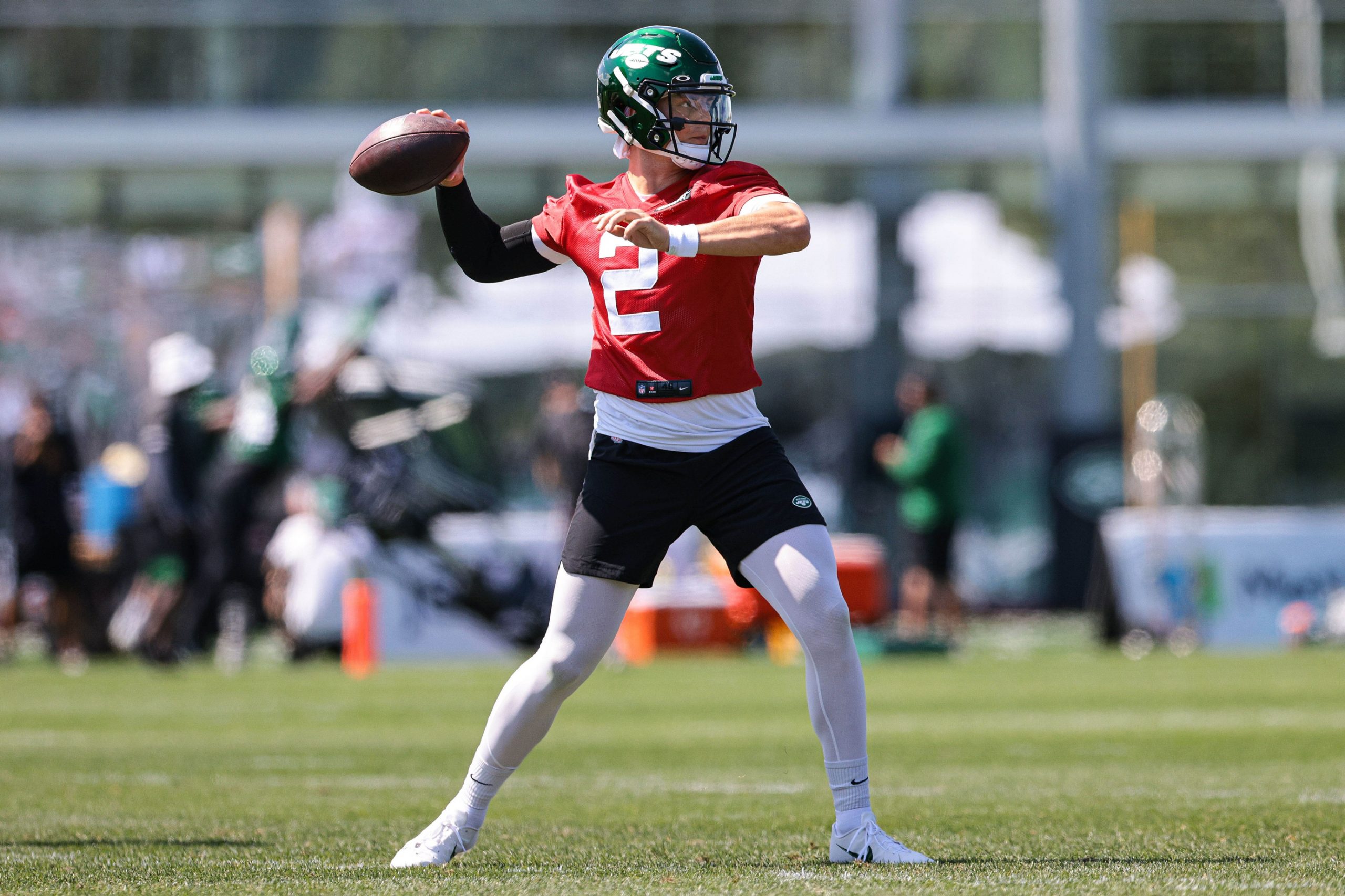
Wilson enters his rookie season with a better supporting cast than Sam Darnold ever had in New York, and there will be pressure on him to capitalize on that talent.
Even though the Jets’ offensive line should be improved, it will be comparatively worse than what Wilson worked with at BYU when factoring in level of competition. Still, Wilson has showcased the outside-the-pocket ability and arm talent to capitalize when things break down. His 95.5 PFF passing grade in 2020 led all college quarterbacks.
PHILADELPHIA EAGLES
WR DeVonta Smith
Smith is likely the most important rookie wide receiver to his offense in 2021. Philadelphia needs him to be a high-level producer immediately with some combination of Jalen Reagor, Travis Fulgham and Greg Ward surrounding him. If the reigning Heisman Trophy winner’s college career is any indication, he’s capable of providing strong play out of the gates. Smith is a polished route runner who creates separation against press, having averaged over 4.0 yards per route run vs. press in both 2019 and 2020.
PITTSBURGH STEELERS
CB Cameron Sutton
Sutton started several games last year, but 2021 represents the first year he will be relied upon as a full-time starter. He'll start at one of the two outside cornerback spots, not in the slot where he has spent most of his time thus far. Sutton has earned an 86.1 coverage grade across 411 snaps in the slot since 2019, and that number falls to a still solid 71.9 coverage grade in 233 snaps outside over the same time frame. Strong play out of Sutton in his new role will be key to Pittsburgh staving off potential regression on defense.
SAN FRANCISCO 49ERS
C Alex Mack
Mack reunites with former offensive coordinator Kyle Shanahan, who he had success under in 2016 with the Falcons (90.8 overall PFF grade and 90.9 run-blocking grade). He’s fallen off a bit in the years since, but Mack’s 65.9 PFF grade in 2020 still ranked among the top half of qualifying centers in the league. Even at 35 years old, Mack will still provide quality play for San Francisco’s offense in 2021, assuming the 49ers are able to get past the sweat situation that has made headlines in training camp.
SEATTLE SEAHAWKS
RG Gabe Jackson
Jackson was part of the fire sale on Las Vegas’ offensive line, and Derek Carr’s loss is Russell Wilson’s gain. Jackson has graded out in the 87th percentile of all guards in pass-blocking grade since the Raiders drafted him in the third round of the 2014 draft. It’s a welcome addition to a Seahawks offense whose guards allowed the fifth-highest pressure rate over that same seven-year stretch. Jackson has taken a slight step back the past two years, so he’ll look to rekindle the stronger play from earlier in his career in a new environment.
TAMPA BAY BUCCANEERS
N/A
It’s difficult to highlight a key first-year starter when a team brings back its entire starting lineup, but O.J. Howard is a name to monitor. He was off to a strong start last season (80.1 PFF grade) before an injury cut his season short, much like in 2018. Howard is in need of a productive, healthy season in 2021 as he plays on his fifth-year option.
TENNESSEE TITANS
EDGE Bud Dupree

The Titans had one of the worst pass rushes in the NFL in 2020, generating pressure on just 25.3% of their pass-rushing snaps — higher than only Jacksonville, Cincinnati and Minnesota in 2020. Dupree (140 pressures since 2018) was their splash signing this offseason to turn that around.
Dupree has shown improvement over the course of his career, and Tennessee will need that trend to continue for him to be an impactful primary pass rusher away from Pittsburgh. His 12.3% pass-rush win rate over the last three years ranks just 69th among qualifying edge defenders.
WASHINGTON FOOTBALL TEAM
QB Ryan Fitzpatrick
Washington’s offense should be more exciting this season. Dwayne Haskins and Alex Smith combined to target players short of the first-down marker on a league-high 61% of their pass attempts in 2020. Fitzpatrick has shown a willingness to push the ball downfield and give his receivers an opportunity to make plays on the ball wherever he’s been. He's coming off the three highest single-season PFF grades of his career in Tampa Bay and Miami. Of course, the blow-up, Fitztragic potential is there too, as we’ve seen at prior stops.
Fitzpatrick’s play is at the center of Washington’s hopes to repeat as NFC East champions.
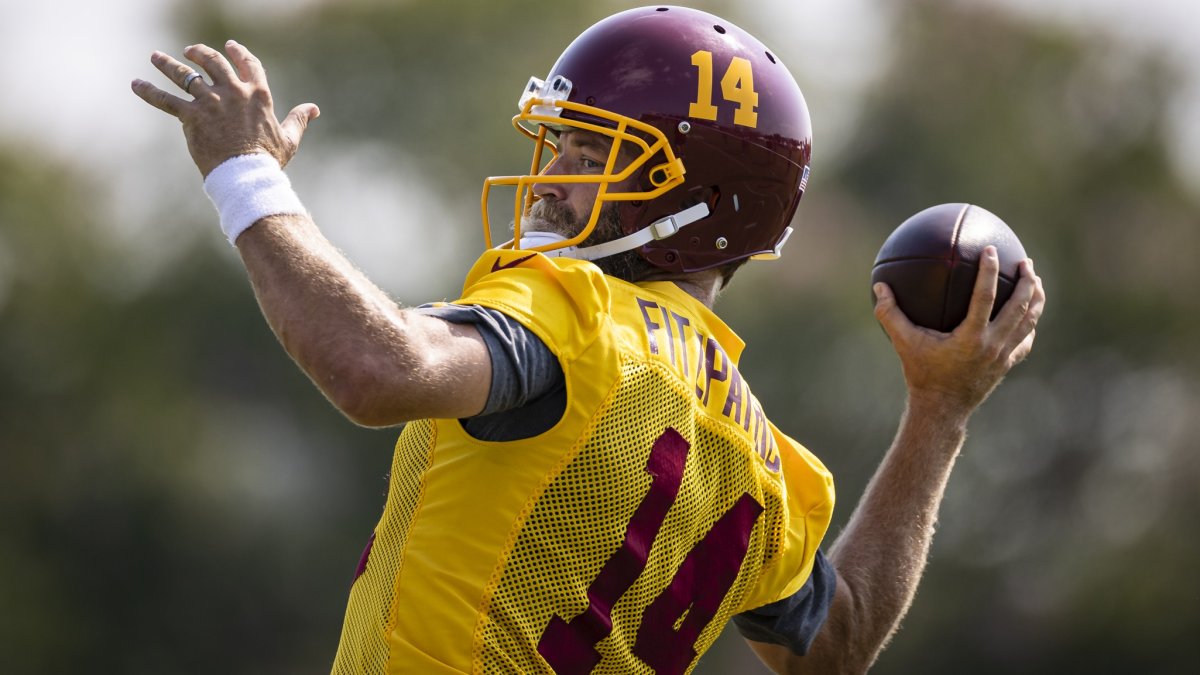


 © 2024 PFF - all rights reserved.
© 2024 PFF - all rights reserved.